Baylor College
Milestones in Microbiology
Life science learners read a set of six short Discovery Readings that describe historical events in the field of microbiology. For each, they identify clues about when the event occurred and then they try to arrange events in...
Baylor College
Post-Assessment: And Now, What Do You Know About Microbes?
Your life science class works in their groups to review the concept maps that they have constructed over the course of a microbiology unit. They share what they have learned with the rest of the class. In a second session, they are given...
Curated OER
Turning the Tide on Trash: Marine Debris Curriculum
Six different lessons comprise this unit on marine debris. Science, language arts, social studies, and art projects make this an ideal interdisciplinary unit. The result will be well-informed future citizens who can help make a...
Baylor College
Lungometer
Life science learners construct lung-o-meters from gallon-sized milk jugs and then measure their lung capacities. For older students, have them graph the vital lung capacities of each person in the class. Cross-curricular pieces are...
Curated OER
How Do You Analyze a Corporation?
Students analyze corporation whose stock they may consider buying for the Global Stock Game (GSG).
Curated OER
Coarl Reef Degradation
Middle schoolers explore methods of preserving Hawaii's ocean ecosystem. Using underwater cameras, students take pictures of the underwater reef. They perform activities to determine the history and degradation of the coal reef. While...
Curated OER
An Atlas of Health Care
Pupils use educational software to create an alphabetical directory of maps that indicates the precise location of the community's health care facilities.
Curated OER
Two Very Different Concepts of Time
Students delve further into the differences between a time-bound culture and a culture in which time seems almost unimportant. They answer the questions: How do people of different cultures view time differently? What can we learn from...
Curated OER
Two Very Different Concepts of Time
Students explore the concept of cultural anthropology. In this culture studies instructional activity, students consider the culture of Guinea as they read "The Meaning of Time" by Katherine Ross. Students also discuss the traits of...
Baylor College
Making Copies of an HIV Particle
In the second of five lessons about HIV, discover the mechanisms that allow the HIV virus to replicate. Using the models that they created the day before, learners examine the parts of the virus particle. The lesson plan does not say...
Curated OER
How Do You Analyze a Corporation?
Students find out how to use annual reports to analyze a corporation whose stock they may buy for the Global Stock Game. They read the investor information section, which provides detailed information about the company's products and...
Curated OER
Gunshots by the Numbers
Young scholars analyze the incidence of gun injuries among children and what can be done about it by reading and discussing the article "Keeping Guns Out of Children's Hands." They convert statistics about gun injuries into visual...
Curated OER
Aboriginal Physical Education
Learners engage in p.e. activities that have roots in native Indian, Metis, and Inuit cultures. They practice the skill involved and listen to the significance behind the skill. They read relevant books and define new terminology.
Curated OER
Miracles of the Heart
Students watch a movie. In this cultures lesson, students read A World Without Black People and then discuss segregation. Students watch the video Partners of the Heart or Something the Lord Made and then reflect on the video in their...
Curated OER
Working With Environmental Issues
Students begin the lesson by completing a survey about how much and what types of water they drink on a daily basis. Using a worksheet, they calculate the amount of water an American uses each day and the amount their own family uses. In...
Curated OER
Lead Contamination In Our Environment
Students identify the sources of lead in their local community and how to prevent further contamination. As a class, they watch a video about the effects of lead on the body and use the internet to discover any new technology that can...
Curated OER
Geology in the News
Students discover the underlying scientific principles in common, daily events.
PBS
Pbs Learning Media: Environmental Public Health: How Does Your Environment Affect Your Health?
In this self-paced lesson, students learn how environmental factors affect the health of living things, including humans.
PBS
Pbs Learning Media: Environmental Public Health: Human Impact on Water Quality
In this lesson, learners explore human impact on water resources, investigate the quality of their community's water supply, and consider ways to clean up and avoid further pollution. (Note: Some of the links may no longer work and...
Public Health Agency of Canada
Public Health Agency of Canada: Family Guide to Physical Activity for Youth (10 14 Years of Age)
The Public Healthy Agency of Canada provides parents, caregivers and guardians of youth ages ten through fourteen with a resource guide to help them instill the importance of being active, having fun and how this will lead to health...
PBS
Pbs Learning Media: Environmental Public Health: Understanding Air: Air Pollution & Modeling Pollutants With Lego Bricks
For this lesson, students learn about the chemical reactions that release various pollutants into the atmosphere and what happens when pollutants in the air are exposed to sunlight. They model incomplete combustion using LEGO bricks, and...
Utah STEM Foundation
Utah Stem Action Center: Air, Natural Resources, and You
Young scholars will analyze data from an air pollution study as well as facts about air pollution and use the data as evidence to infer the effect of using natural resources on the atmosphere and on public health.
US Environmental Protection Agency
Epa: Where Does Your Water Come From? [Pdf]
Where does your drinking water come from? This resource features a clear and concise explanation for this question. This resource will be beneficial to students and teachers.


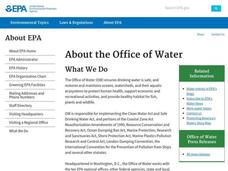


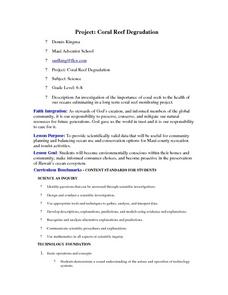
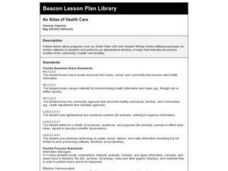
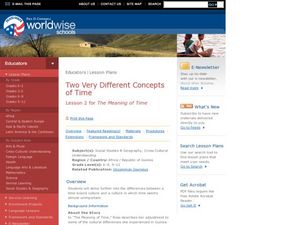


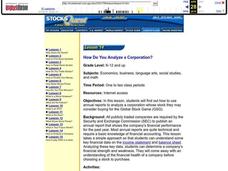




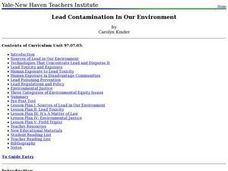
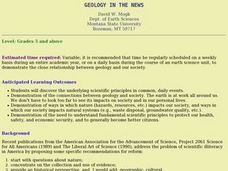

![Epa: Where Does Your Water Come From? [Pdf] Lesson Plan Epa: Where Does Your Water Come From? [Pdf] Lesson Plan](https://content.lessonplanet.com/knovation/original/41160-83ff7c05b0f0460206fa551d2700d8dc.jpg?1661270414)